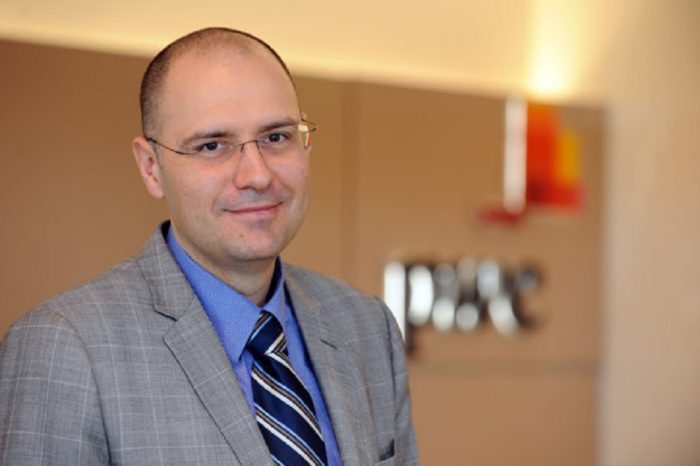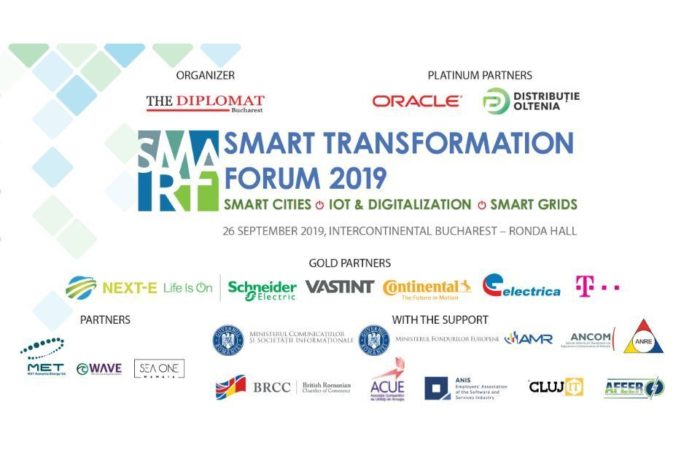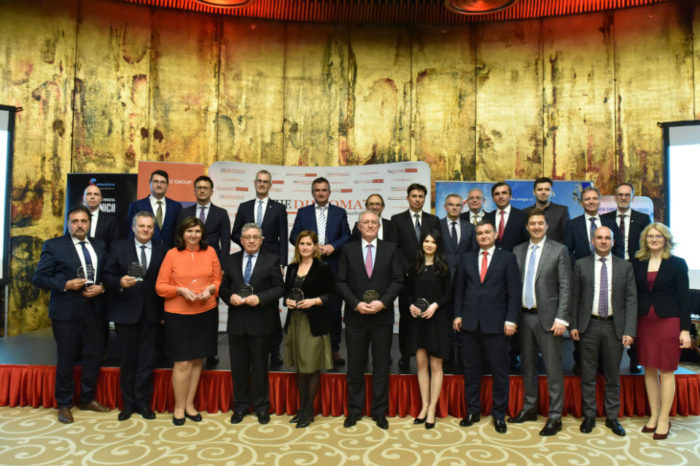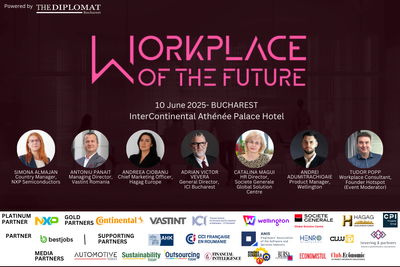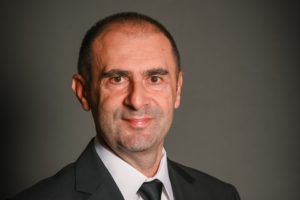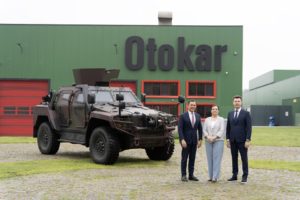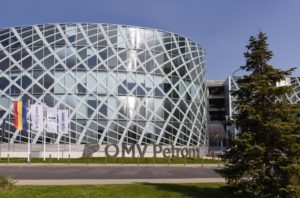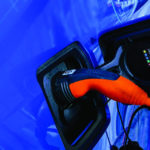Romania’s electrified future: E-mobility goals and challenges
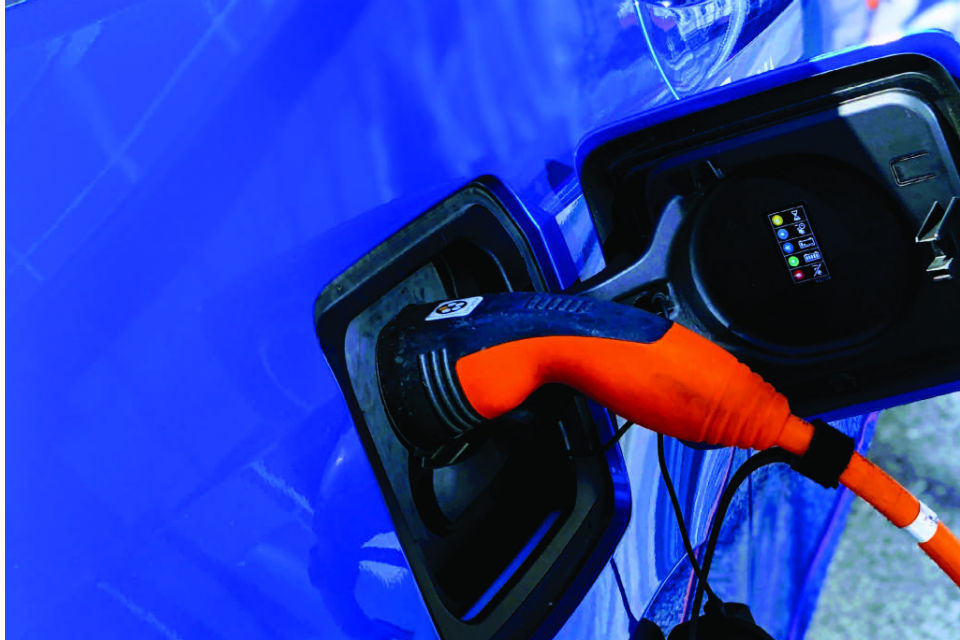
The future of transportation is here and it is electric. Electrified vehicles represent fewer carbon emissions, zero air pollution, and less noise. It also represents lower energy costs, lower total cost of operation, tax advantages, and government subsidies in many cases. International demand for electric mobility is growing every day and global markets have to come up with sustainable and innovative products and services.
Romania is one of the positive examples in terms of subsidies for green vehicles, with a better EV infrastructure than most European countries.
One of the largest public e-mobility projects in the country is the one developed by Enel. The plan includes the installation of around 2,500 charging points across all of Romania’s regions between 2019 and 2023, involving an overall investment of 15 to 20 million Euro.
The first charging infrastructures will be installed in 2019 in Bucharest, Timisoara, and Constanta. The plan covers all of Romania’s regions, and is aimed at tailoring the distribution and installation of charging stations to optimise the development of EV use in the country, at both household and institutional level, as well as among businesses, according to demand from fleet owners. Approximately 300 charging points are expected to be installed by the end of 2019.
In July 2017, the NEXT-E project was selected by the European Commission for co-financing through the Connecting Europe Facility (CEF) and Romania is one of the beneficiaries.
The project is moving fast and the charging stations will be installed in areas that are heavily transited. Two 93 kW fast charging stations have been installed in Piatra Neamt and Roman, which are added to the ones in Scheia (Suceava county), Tasca (Neamt county), Adjud (Vrancea), Targu Frumos and Cristesti. By the end of the year, NEXT-E plans to implement the project on the route from Iasi – Gheorghieni – Tg. Mureş, which will become an “electric highway”. Another “electric highway”, which will link the city of Iasi to Bucuresti, is in full swing.
“We think that Romania has to start with ambitious projects regarding the charging infrastructure in order to increase the acknowledgment of electric mobility,” says Nicolae Mocioi, general secretary of the Romanian Association for Electric Vehicles (AVER).
A national network with a good coverage of charging stations would boost the confidence of buying an electric vehicle. Several cities (Cluj, Brasov, Turda, Tulcea, Arad) have inaugurated electric buses that meet new regulatory requirements set by governments and EU Commission. The biggest retailers in the country are equipping their hypermarkets with charging stations. In some cases, charging is free and this method is a marketable solution granted by the growing e-mobility sector.
“Today’s e-mobility services are experiencing a period of significant growth,” says Mocioi. “In fact, the benefits associated with this new form of transport in terms of enhanced environmental sustainability (especially in urban areas), energy efficiency, technological content, accessibility, and connectivity are increasingly galvanizing the attention and interest of the various players involved (government, industry and individuals),” he adds.
AVER promotes electric vehicles in Romania
AVER is one of the main promoters of electric vehicles in Romania. It claims that Romania has over 40 years of scientific pursuit in the e-mobility sector.
AVER is a member of AVERE, the European association for electric vehicles. On March 26, during the Smart Cities and Mobility Forum in Sofia, AVER and other five Electric Mobility associations from five Balkan countries (Bulgaria, Greece, Serbia, Macedonia, Hungary) agreed to cooperate in their efforts to accelerate the adoption of electric mobility in the region.
“We have signed a long-term Memorandum of Understanding under which we will together address all obstacles to electric mobility, influence our respective governments and local authorities for reaching harmonization in the regulation of charging infrastructure, and work for the implementation of trans-border charging infrastructure,” says Mocioi.
Romania is experiencing a substantial shift to electromobility, growing across the country as the new technology for sustainable transportation. National legislation should provide the best framework for the industry to thrive and make sure that electromobility can be enjoyed by everyone.
Romania is an emerging market with huge potential for new mobility solutions, but it faces challenges in terms of congestion, lack of space, growing population, air quality, noise, social inclusion, health, economic development, and creation of jobs.
“Innovation and competitiveness are crucial for the future,” says Mocioi. “Car sharing and smart bicycle solutions can contribute to wealthy, healthy, clean, spacious, liveable, and accessible cities. We need to bring theory to practice. There is a lot of knowledge that needs to be implemented in ‘learning by doing’ concepts and real-life test environments. Adoption of user-centric design models is required in the ‘learning by doing’ concepts. There is a lot of work to do but we are in luck. We can start with the maturity and the experience of examples that we see in European cities that have gone through this.”
Romania has over 300 charging stations for electric vehicles, mostly in the Bucuresti-Ilfov region. A lot of hypermarkets in the main cities have fast chargers installed and some provide free charging. There is a sustained financing program starting from 2019 that provides for the installation of fast charging stations in the municipalities. Also, there are two European funded projects for the installation of fast chargers on the TEN-T road network. Romania is expected to have a full-grown connected charging network in the next three to five years.
CEZ Romania focuses on e-mobility solutions
E-mobility is also a strong point of interest for CEZ Group in Romania, ever since 2015 when it installed its first charging stations in Pitesti and Craiova with Resita following at the beginning of 2018. All three of them are still available, free of charge, for any owner of electrical and plug-in hybrid cars, according to Ondrej Safar, CEO at CEZ Romania.
“E-mobility was further introduced in the Group’s activity by having a full electrical car (Renault ZOE) and a hybrid one in the car fleet, which are used by CEZ employees in their business travels,” says Safar.
In the first year of e-mobility, the electric car in CEZ fleet was driven for 5 200 km, by almost 300 employees, resulting in an average of 300 green km per month.
That same year, CEZ Group in Romania conducted an online study in order to further learn more on the opinion Romanians have on mobility. Almost 1,700 persons participated at the study which revealed that driving is still the most preferred style of mobility (for six out of ten Romanians) while riding a bike is preferred by only two out of ten respondents.
Seven out of ten Romanians thought that the electric motor is going to have a major impact on the urban transportation means and five out of ten would choose a less polluting way of travelling.
“Our strategy until now focused on our energy distribution area and at first instance, to learn about the activity, its liability and long-term sustainability and most of all, people’s reaction and needs,” says Safar. “We’re trying to support our public partners and respond to our customers’ needs but we’re considering the mobility solutions as rather a growing path with many aspects yet to solve (from financing to meeting business long term conditions).
“We have a distinctive strategy; we’re cooperating with other Group entities with far more experience in this area and we hope in the near future to be able to initiate a significant movement in this direction.”
Safar believes Romania’s potential for new mobility solutions is rather high mainly due to people’s perception and attraction to this segment and to existing subsidies. “Unfortunately, the lack of a fully operational infrastructure represents a significant barrier that we hope to overcome soon,” he adds. “We’re optimistic in the years to come as we also see trends in Europe, e-mobility will be also an important part of the day by day routine.”
One of the main goals for CEZ Romania is to continue to have e-mobility solutions in the activity portfolio and to be able to respond to customers and partners’ requests if such requests prove to meet minimal requirements in term of benefits and medium-term operation.
E.ON Romania to implement the “electrical highway” project by the end of 2020
By 2020, through the NEXT-E project, 40 fast charge stations will be installed in Romania of which 19 shall be installed by E.ON and 21 by MOL Romania. All the stations will be located on the routes: Suceava-Bacau-Calarasi, Constanta-Bucuresti-Timisoara, and Iasi-Targu Mures-Alba Iulia. Through this initiative, the infrastructure of charging stations for electric vehicles for the Trans-European Transport Network (TEN-T) will be enhanced by the infrastructure of charging stations for electric vehicles in Romania, thus facilitating low CO2 emission traffic and having low impact on the environment. The stations will be integrated into a charging session monitoring and management system. This system ensures the 24/7 monitoring of a particular unit and has the possibility to remotely solve the possible incidents that may occur during charging.
So far, E.ON has set into operation eight charging units in Iasi, Targu Frumos, Cristesti (Iasi County), Piatra Neamt, Roman, Tasca (Neamt County), Adjud (Vrancea County), and in Scheia (Suceava County). A fast charge station 2×50 kW (direct current) + 1×43 kW (alternating current) is installed in each location.
As a priority, by the end of next year, E.ON intends to implement the project on the Iasi-Gheorgheni-Targu Mureş route, which will thus become an “electrical highway” to be used by all the owners of environment-friendly vehicles, a charging infrastructure being provided along the route. Another “electrical highway” which will connect Iasi and Bucharest, is in full development.
In 2018, more than 2,500 Romanians bought ecological vehicles, either 100 percent electric or hybrid plug-in, making an increase of 73.3 percent over the previous year, according to the Automotive Manufacturers and Importers Association (APIA). Growing demand for electric cars will generate major changes in cities, and in the absence of projects developed early, charging infrastructure will become a major issue in the coming years.
“E.ON wants to promote the world of energy generated by electric vehicles, which is why, at the group level, there are several initiatives both on the concept of E-Mobility and on the alternative mobility technologies,” says Claudia Griech, deputy general Manager E.ON Romania.
“Specifically, E.ON has three pillars that focus on E-Mobility investments: the concept of charging on the road, charging in the office, and charging at home. E.ON is currently developing a global network to provide the infrastructure for electric vehicles in six countries. We are very advanced in Denmark, where the municipality of Copenhagen has been involved, ambitious to reduce its carbon footprint by 2025 so that after this year it will no longer use anything other than electric vehicles.”
In Romania, E.ON is involved in an infrastructure development project, NEXT-E, which is also based on European funds. It is a consortium of E.ON, MOL, BMW, and Nissan to develop the infrastructure for Romania, the Czech Republic, Hungary, Slovakia, Slovenia, and Croatia as regards the provision of fast and ultra-fast charging stations along the pan-European corridors.
Romanians are among the most open Europeans to the idea of buying electric cars, reveals a study by E.ON and Kantar EMNID, according to which 36 percent of those who were looking for a new car at the time of the survey were looking to buy an electric one.
But, like most Eastern Europeans, Romanians are rather sceptical when asked about how they see the potential supremacy of electric vehicles on the roads. 22 percent of those questioned say that it is impossible for our country to ever reach the performance of having a carpool mostly made up of electric vehicles. Another 25 percent of fellow countrymen predict that electric vehicles could exceed the number of conventional motor vehicles only in 20 years from now. In fact, in Eastern Europe, we find the most negative projections for the future era of mobility. For example, only 15 percent of Czechs believe the electric car could become the queen of the roads within the next ten years. The most sceptical are the Hungarians, with only 14 percent of respondents, convinced that the change will take place within a decade. According to the respondents’ answers in Romania, one of the most discouraging reasons for those who have not yet been convinced to invest in electric cars would be the low number of charging stations.
According to PlugShare, there are already over 150 locations in Romania equipped with one or more electric vehicle charging stations. Their number is steadily increasing due to both EU-funded projects and increased interest in the Romanian business environment.
Also, with the launch of funding from the Environmental Fund Administration, local authorities can access funds to develop public charging infrastructure in the cities they manage. The number of stations in Romania is quite small.
The number of stations in Romania is rather small, especially in comparison with the Nordic countries which have a pioneering role in the adoption of electric mobility. As early as 2017, Denmark accounted for more than 2,030 public-loading stations for electric cars, which exceeded that of traditional gas stations. At the same time, Norway, the country with the highest adoption rate of electric cars, has ticked a new record. For the first time on a global scale, the number of purchased electric cars accounted for 60 percent of the total of cars purchased in March.
Regarding the countries of the region (Central and Eastern Europe), the main drive for the creation of the charging infrastructure for electric cars is the funding provided by the European Commission through the Connecting Europe Facility (CEF). Thanks to a large number of ongoing projects, in countries such as Slovakia, Slovenia, Croatia, and the Czech Republic, the number of fast and ultra-fast charging stations exceeds those in Romania. Our country is still at the beginning, but due to the increased interest among Romanians in electric cars, the forecasts are quite optimistic.
“E.ON focuses on providing infrastructure, this is one of the directions, another being product development for residential, municipal and business customers,” says Griech. “These products mean charging stations along with green energy products because if the concept of E-Mobility aims to reduce the carbon footprint, you can only do it with green energy. Next year we are going to market products for residential customers; we are conducting talks to establish partnerships for electric vehicles. Ultimately, all we want is to use also the subsidies granted by the Romanian state for the purchase of electric vehicles, in order to stimulate also across Romania, the more cautious use of the E-Mobility concept, aiming for a better, greener world in which we can live.”
MOL Romania believes electric vehicles will play an important role on long term
As electric vehicles are becoming more and more popular, we may expect to witness an evolution of the provided services and of the infrastructure required to EVs.
“MOL is aware that, on the long term, EV will play an important role and the company is taking the necessary steps to adapt its business model to this new reality through its 2030 Strategy,” says Camelia Ene, CEO MOL Romania. “The deployment of fast chargers, part of the NEXT-E project, started already in 2019. The full deployment will be concluded by the end of 2020. In two years’ time Romania will have 40 new fast charging stations for electric vehicles in place thanks to the NEXT-E project, funded by the EU. MOL Romania will build 21 fast charging stations and E.ON Romania will build 19.”
MOL aims to become one of the primary sources of mobility solutions and innovations in the region, and to branch out from commodity seller to service provider.
“For such transformation, digital technologies will play a vital role in improving our understanding of what customers want from a convenience retailer or a mobility provider,” says Ene. While MOL already employs certain digital technologies, we have started to significantly gear up our capabilities to prepare for this new digital retail world. Our ambition is to embrace the e-mobility revolution and explore opportunities arising from development of alternative fuels. We want all our customers, regardless of whether they drive a traditional or electric vehicle, to be able to travel freely across our region.”
Last year, MOL launched a car sharing service in Budapest, MOL Limo. Since its launch, the MOL Limo fleet has grown from 300 to 450 cars. One-fourth of the 400-strong fleet of Volkswagen up! models that MOL owns and operates, runs on electricity.
“We are aware that our external environment is changing more rapidly than ever before, carrying the risk of decreasing demand for fossil fuels in the long-term, while at the same time customer habits and needs are also rapidly changing,” says Ene. “We have the capability, the financial means, and the professional know-how to use the momentum to leverage previous successes and build on the opportunities provided by the changing environment.”
Under the 2030 Strategy, one of MOL’s goals is to transform its retail business into a service provider to offer the most desired services to people on the move (car-sharing, electric mobility and operation of vehicle fleets, solutions for public transportation in cities).
Siemens: Romania has just begun the electromobility journey
Electromobility is one of the major global trends not only because the world struggles with rising CO2 emissions, but also due to the cost savings it can bring. For example, a fleet of 100 electric buses can generate a cost saving up to three million Euro and a CO2 reduction up to 17,000 tons at an estimated 70,000 km per year, according to Cristian Secosan, CEO Siemens Romania.
“The future of worldwide mobility is electric for sure,” he says. “Siemens has an extensive e-mobility portfolio, consisting of fast charging stations for e-buses, automation, applications and intelligent management solutions, drive systems, and e-highway solutions. We are involved in electromobility projects all over the world, from e-bus fast charging stations to e-highway projects.”
Secosan believes Romania has just begun the electromobility journey, and it is an emerging, very young market.
“Although we still have a long journey ahead, we see positive evolution: important municipalities have bought or plan to buy electric buses and the number of electrical cars sold in Romania is substantially increasing,” he adds. “As the market grows, we also notice an increased interest for electromobility infrastructure solutions.”
Last year, the number of electrical vehicles sold locally registered a triple-digit increase. Similar growth rates will also probably be registered in the upcoming years, if we consider the EU CO2 reduction objectives and the electromobility programs launched on the market.
Secosan underlines that the electrification of mobility is a long-term process: “We can’t expect to wake up tomorrow and see an all-electric mobility, but for sure each day we will witness a small progress in this electro-journey. Electromobility should be included in a larger strategy and integrated in the life of the city in such a way it will connect with other areas, other intelligent infrastructure technologies. For example, Siemens was involved in a research project where electrical cars were connected in their storage units and could provide energy for buildings during the hours they were not used.”
Porsche Finance Group provides car sharing services under “sharetoo” brand
E-mobility will shape the automotive industry in the future and will influence the financing business, as larger companies show interest in electric and hybrid options to add to their auto fleets
Radu Manea, Director of Fleet Management Division, Porsche Finance Group (PFG), expects this trend to continue. He says PFG is providing since 2017 the first corporate car sharing service under the brand “sharetoo,” allowing companies to have around the clock access to cars that best fit employee and business needs, with 100 percent flexibility.
“Sharetoo is consolidating and further expanding as a flexible, mobile corporate fleet, where what matters are the decisions clients take regarding car and fleet customization,” he adds. “In fact, that is the very concept that stands behind ‘sharetoo’; that fleet structure, the model, and the very customization of each car are decided individually, by each client based on everyone’s flexible needs. This is one of the directions we are focusing on, and together with our classical, core financing and insurance products, we sincerely believe that we are able to offer innovative and complete mobility solutions for all customer needs.”
PFG believes that the market is open to these new mobility solutions and Romanians have been quick to adjust to the benefits of corporate car sharing as well as other mobility projects.
(From the print edition)



